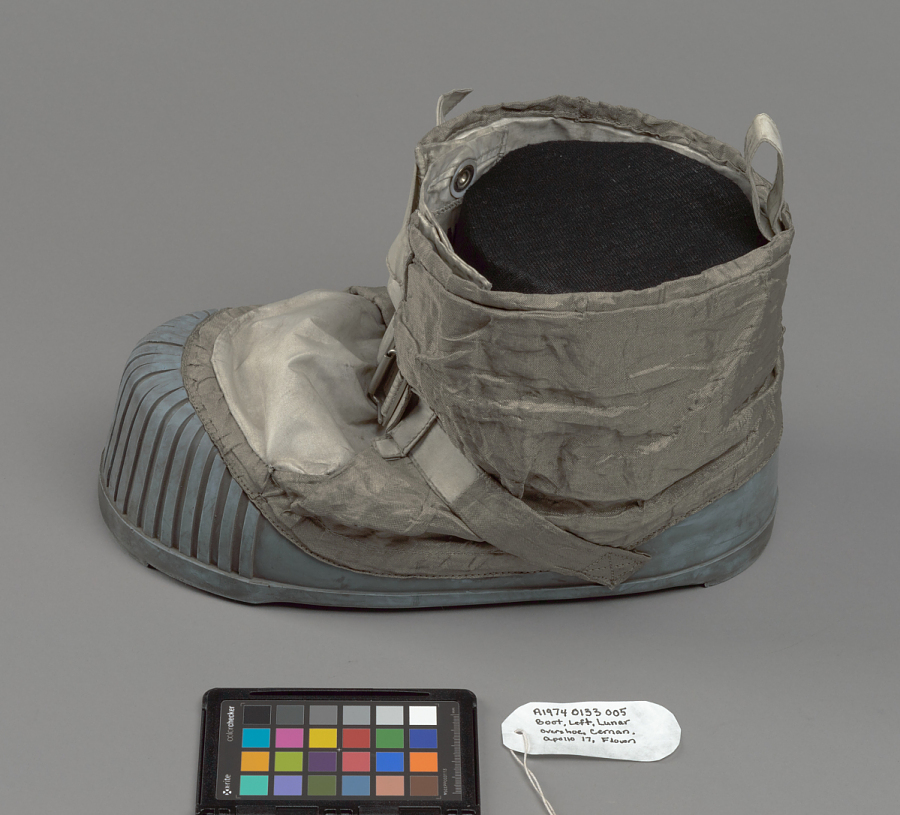When you think of space exploration, the first things that come to mind are rockets, space suits, and helmets. But here’s something most people overlook—boots!
Yes, the shoes astronauts wear are as important as the spacecraft they ride in. A simple slip, puncture, or freeze on another planet could mean disaster. That’s why NASA and other space agencies put massive effort into designing the perfect footwear for astronauts.
From the historic Apollo boots that left humanity’s first footprints on the Moon 🌙 to futuristic designs built for Mars 🪐, space footwear is a blend of science, safety, and style.
🚀 A Small Step for Man, A Giant Leap for… Boots?
In 1969, when Neil Armstrong made history with his first step on the Moon, he was wearing custom-made lunar boots. These weren’t ordinary shoes—they were layered, insulated, and armored against the Moon’s tricky surface.
- Apollo Era Boots:
- Built like overshoes that slipped over the suit’s inner boots.
- Made of silicone rubber soles for grip.
- Wrapped with Chromel-R fabric (woven stainless steel!) to resist cuts from sharp rocks.
- Had multiple insulating layers to handle wild temperatures: from scorching heat (+127°C) to freezing cold (−173°C).
Fun fact: Some Apollo boots are still lying on the Moon! 🚀 To save weight for Moon rocks, astronauts left their overshoes behind.
🧑🚀 Why Space Boots Are So Complicated
On Earth, shoes are about comfort and fashion. In space? They’re about survival. Here’s what astronaut boots must handle:
- 🔥 Extreme Temperatures – from boiling hot to deadly cold in minutes.
- 🕳️ Sharp Rocks & Dust – Moon dust is like glass shards; it can cut through fabric.
- 🌀 Zero or Low Gravity – boots must grip surfaces, or astronauts risk floating or tripping.
- 🧑🔧 Mobility – bulky suits already make moving hard; stiff boots would make it worse.
- ⚖️ Weight Matters – every extra gram adds cost to the mission, so boots must be protective yet light.
Basically, astronaut boots are mini spaceships for the feet.
👟 Futuristic Space Footwear – From NASA to Reebok
Today, NASA and private companies are creating next-gen space boots that look like something out of a sci-fi movie. Let’s check them out:
1. AxEMU Boots (Artemis Mission)
- Designed by NASA & Axiom with help from… Prada! Yes, fashion meets space.
- Made for the Artemis III Moon mission in 2026.
- Feature modular soles—astronauts can swap them depending on terrain.
- Built for all body types (1st to 99th percentile in size).
These boots are sleeker, more flexible, and safer than Apollo’s bulky versions.
2. Reebok Floatride Space Boot SB-01
- Created for Boeing’s Starliner space suit.
- Inspired by running shoes, with lightweight Floatride foam midsoles.
- More breathable, flexible, and stylish—astronauts finally get comfort in space!
- Looks like a mix between sneakers and space armor.
3. MIT’s AIR-0 Inflatable Boots
- A futuristic concept for spacewalking outside spacecraft.
- Features inflatable ankle supports and a 3D-printed sole.
- Can “lock” astronauts in place when working in microgravity.
- Basically—imagine Air Jordans, but for zero gravity!
🛰️ Materials That Make Space Boots Superhuman
Astronaut boots use cutting-edge materials far beyond your favorite sneakers:
- 🦾 Chromel-R Fabric – woven stainless steel for cut resistance.
- 🧵 Beta Cloth & Kapton – fireproof, heat-resistant fabric layers.
- 🪞 Mylar – shiny foil that reflects heat and radiation.
- 🥾 Silicone Rubber Soles – durable, flexible, and grip-friendly.
- 🫧 Advanced Foams & 3D Printing – modern boots use sneaker tech and inflatable supports.
👣 What the Future Holds for Space Footwear
As humans prepare for longer missions—Moon bases, Mars colonies—boots will only get smarter. Imagine:
- Self-heating boots that warm your toes on Mars nights.
- Smart soles with sensors to monitor astronaut health and balance.
- Dust-repelling surfaces to fight the nightmare of Moon and Mars dust.
- Eco-friendly materials borrowed from sustainable sneakers on Earth.
Soon, astronaut boots won’t just protect—they’ll be wearable tech hubs.
❓ FAQs About Space Boots
Q1: Why did Apollo boots have blue soles?
A: For visibility and easy identification. The color stood out against the gray lunar dust.
Q2: How heavy are astronaut boots?
A: Apollo overshoes weighed about 3 pounds each on Earth. On the Moon (with 1/6 gravity), they felt much lighter.
Q3: Could you wear astronaut boots on Earth?
A: Technically yes, but they’d be clunky, hot, and uncomfortable. They’re built for survival, not walking your dog.
Q4: How will Mars boots differ from Moon boots?
A: Mars has stronger gravity and different dust. Mars boots need more support, durability, and better long-term comfort.
Q5: Can space boot tech improve normal sneakers?
A: Absolutely! Foams, lightweight fabrics, and heat-resistant materials are already used in modern running shoes.
🌌 Final Thoughts
Astronaut boots are not just shoes—they are symbols of human exploration. From the first dusty footprints on the Moon to futuristic designs for Mars, they represent progress, survival, and even style.
Next time you lace up your sneakers, think about this: your comfy trainers might carry a little bit of space boot DNA in them. After all, innovations from NASA often inspire the shoes we wear every day.
👟✨ One small step for fashion, one giant leap for footwear technology!



